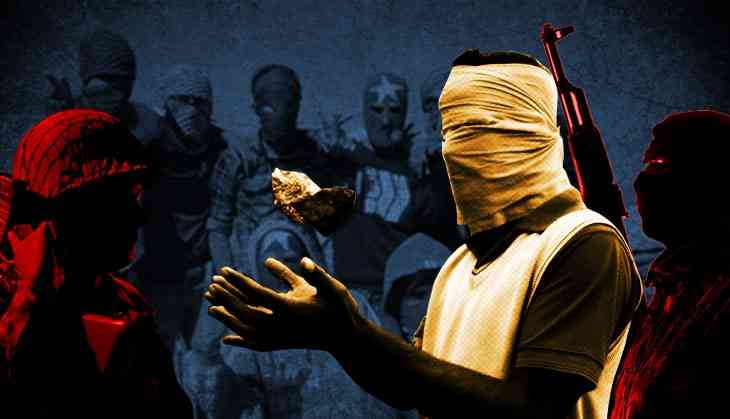Why are Kashmiri civilians risking their lives to help militants? Insights from the latest Ground Zero

A leafless Chinar tree with a large hole in its trunk stands unscathed at the site of the 13 February encounter at Frisal in Kulgam district which left four militants, two soldiers and two civilians dead. The house that stood next to it and where the militants were holed up stands razed. The place is now frequented by curious onlookers, some of whom linger a while to talk to the villagers. The conversations are matter-of-fact, generally confined to getting a first-hand account of the gunfight. It is only when the exchange steers towards the politics of the incident that a new Kashmir discourse is drawn in sharp relief.
In this discourse, the militants are the unambiguous heroes, security forces an “abomination” and the jihadist path the only sane response to the prevailing “injustice”.
“Jihad is the only way to end oppression,” says Mudasir Ahmad, a gangling youth in his twenties. “You forgot how many were killed and blinded last year?”
Also Read: Kulgam killings show post-Burhan turmoil isn't over, it's only on pause
The encounter at Frisal had begun in the middle of night and, according to the villagers, by the time dawn broke, two security personnel and a civilian had been killed. It was then that the villagers rose up in revolt. Soon, more youth came from the adjacent villages, appearing from behind the denuded hillocks, shouting slogans and throwing stones.
They were pushing closer, trying to gherao the encounter site to help the militants escape. Brought to bay, the security forces fired bullets and pellets at the advancing crowd, killing a 22-year-old Mushtaq Ahmad Itoo of Hatigam village. Fifteen other protesters sustained bullet injuries while several were wounded by pellets, two of them in the eyes.
The militants were killed in the afternoon and the house was blown up, leaving no trace of it on the ground. The army sanitised the site and left. The old Chinar with a hole in its trunk, however, stands, belying the violence that took place under its sprawling branches.
It was the Frisal encounter and gun battles at north Kashmir's Hajin and Handwara – which left four army personnel dead – that prompted Army Chief General Bipin Rawat to warn the protesters against diusrupting operations at encounter sites.
At Hajin, the protesters allegedly helped three of the four militants escape. Two days later at Urivan in Pulwama district, the army had to abandon an operation after facing stiff resistance from the villagers who turned out in their hundreds and pelted stones.
“Now, our nation will be freed,” says Ghulam Rasool, 70, of Frisal, recalling with pride the lack of fear and the defiance of the army shown by the youth who sought to help the militants escape. “Now, our nation will be freed,” he adds for emphasis.
He praises “today’s militants” compared to their “nineties’ forerunners”, saying the latter were more into pursuing their personal agendas than Azadi. “When the nineties’ militants entered a home, they demanded meat and chicken for food. Not today’s militants. They pay you for the food and eat frugal meals,” says Rasool. “Today’s militants are into jihad to earn the blessings of Allah. Not to lord over the land and the people. This is why people support them and are ready to die saving them.”
Also Read: Blogger militant’s death underlines the tragedy of Kashmir
Rasool’s rationale is a common refrain across the area, even among the families of the slain or active militants. Sons are said to have taken up the gun in response to ‘zulm’, ‘fulfilment of God’s wish’ and Azadi. For them, it seems unthinkable that there could be any alternative to the armed struggle. Jihad is a given, a way of life and the only option if things are to change for the better.
“My brother was killed through torture by the security forces,” alleges Mohammad Shafi, the brother of Ishfaq Reshi, the second civilian killed during the Frisal encounter. “We would have gone looking for justice. But has anybody before us got it?”
In the neighbouring villages, the opinion is little different. The youth know the names of local militants by heart, they hero-worship them and show every inclination to follow in their footsteps. Jihad graffiti is all over the place – on boundary walls and even the sides and facades of houses. There are Burhan parks, Burhan markets and Burhan playgrounds.
Families of militants talk of their sons disappearing for no reason and then surfacing in social media videos wielding Kalashnikovs. One of them was the blogger Abdul Basit, the 22-year-old son of banker Ghulam Rasool Dar. On 11 October, he left home for evening prayers at the mosque but didn’t return. After days of frantic search, Dar was informed by the police that Basit had joined Hizb-ul-Mujahideen. He was killed 53 days later in an encounter at Marhama. Basit had not called his family once in those days, not even his mother.
“I don’t understand what happened. He was a normal child. He never gave an indication of what was going on in his mind. Never discussed politics or Azadi, which would have alerted me,” Dar told Catch, his eyes growing moist. “What has happened to me and the other parents, I don’t want others to go through the same experience. It is painful to lose your child. Please do something about this problem in Kashmir.”
Some names have been changed to protect identities
Also Read: Kashmir is drifting back to militancy. Do not take it lightly

